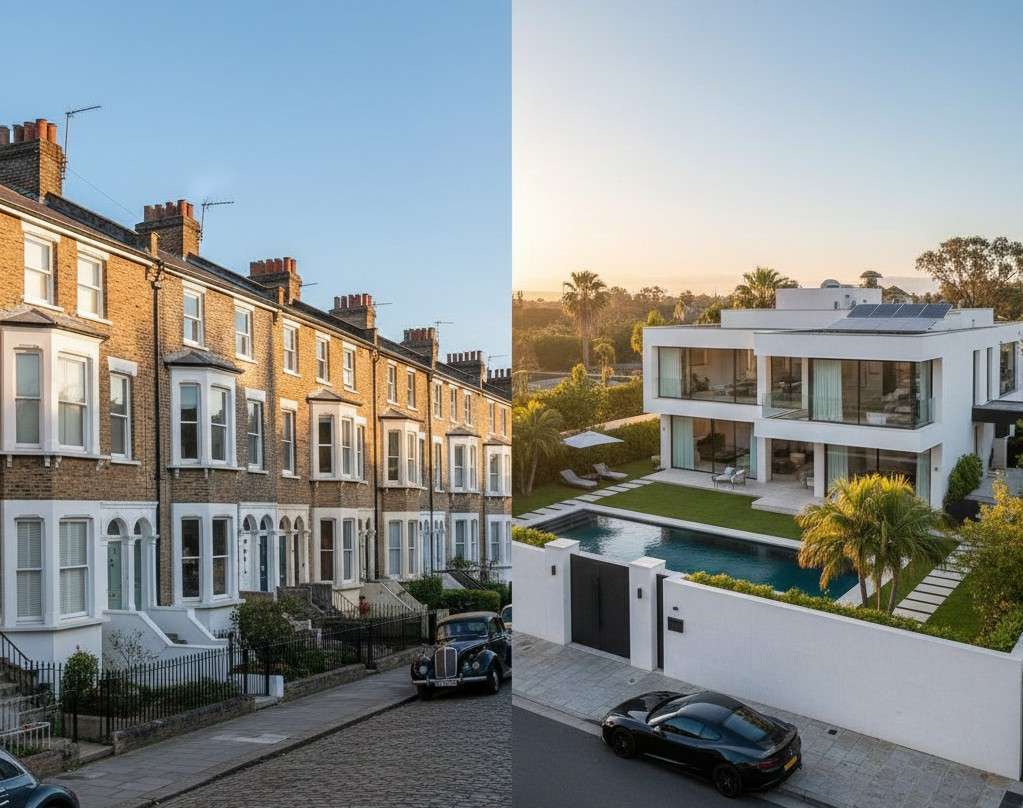Tall, sky-touching structures are a typical feature across metro centres. If you live in a city, you are likely to see buildings of various shapes and sizes. Along with other important considerations like layout, amenities, and location, consumers look at height when purchasing their dream home. While some people think low rise buildings are ideal for living, others would rather live in a society with high rise buildings. Choosing what to select from this category may be difficult for some, including you. In this article, you will learn about both types of buildings and their benefits and drawbacks.
High rise buildings are skyscrapers that rise above the cityscape. Typically with more than ten floors and continuously habitable buildings of many stories, usually designed for office, residential, or hotel use. These apartments are typically found in urban areas and offer stunning views and modern amenities. When considering this type of building, think about the benefits of urban living and the convenience of having amenities at your doorstep. These buildings, like the sky apartments, offer luxurious living with modern amenities.

Low-rise buildings typically consist of one to four floors and are commonly found in suburban or less densely populated urban areas. These buildings often offer a more intimate, community-oriented environment. Unlike high-rise buildings, low-rise structures don’t require elevators. Usually, they have direct access to the ground, making them more accessible and easier to navigate, especially for children, the elderly, or those with mobility issues.

We can see different types of buildings according to their size and height; each building shows a unique architectural characteristic. The terms low rise and high rise were named for different categories of buildings based on the number of floors they have and these distinctions have a large impact on design, construction, and functionality. The key factors include:
High-rise buildings are designed to maximise space efficiency through their vertical layout. This means that while living areas may be smaller, they are often more functional and well-designed. Additionally, high-rise buildings offer stunning views from higher floors, providing a unique and desirable feature for residents. In contrast, low rise apartment provide more flexible layouts and potentially larger living areas, with more outdoor space and natural light. This creates a sense of openness and airiness, making low-rise buildings a great option for those who value space and comfort.
Tall buildings typically offer a wide range of amenities and services, including gyms, pools, and concierge services. Many high-rise buildings also feature on-site restaurants, cafes, and shops, providing residents with a convenient and luxurious lifestyle. Furthermore, high-rise buildings often have round-the-clock maintenance and support staff, ensuring that any issues or concerns are addressed promptly. Low-rise buildings, on the other hand, may have fewer amenities but offer more personalised services. They often provide more intimate and community-focused amenities, such as community gardens or shared outdoor spaces, and may have easier access to outdoor amenities like parks or gardens.
High rise buildings are generally more expensive due to their prime location, luxurious amenities, and high-end finishes. Residents of high-rise buildings can expect to pay higher utility bills and maintenance fees, but they also enjoy luxury finishes and high-end appliances. In contrast, low-rise buildings offer more affordable options, with lower utility bills and lower maintenance fees and property taxes. This makes low-rise buildings a more budget-friendly option for those who want to save money without sacrificing comfort and convenience.
High-rise buildings prioritise safety and security, with advanced security systems, secure entry systems, and around-the-clock security personnel. Many high-rise buildings also feature CCTV cameras, ensuring that residents are safe and secure at all times. Low-rise buildings may have more limited security measures, but they offer a sense of community and neighbourly watchfulness. Residents of low-rise buildings can also enjoy easier access to outdoor spaces and emergency services, providing an added layer of safety and security.
Skyscrapers often have an urban, fast-paced lifestyle with a sense of excitement and energy. Residents of high-rise buildings have more opportunities for socialising and networking, with many buildings featuring community events and activities. In contrast, low-rise buildings provide a more relaxed, community-focused atmosphere with a sense of belonging and connection. Residents of low-rise buildings can enjoy more opportunities for outdoor activities and nature connection, making them a great option for those who value community and a slower pace of life.
When deciding which type of building suits you best, remember to consider these key factors before making a decision:
Summing up, the choice between high-rise and low-rise buildings ultimately depends on your individual priorities, lifestyle, and preferences. Both types of buildings offer unique advantages and challenges. When deciding which building type is better for you, consider your priorities, location, and long-term goals. Assess what matters most to you, like space, amenities, cost, safety, or community. Study the pros and cons of each option carefully. Whether you choose the sky high apartments of a high rise building or the cosy charm of a low rise building, make sure it aligns with your vision of the perfect living space.
Remember, your home is where your heart is, and it’s essential to choose a building type that resonates with your heart and soul. Take your time, do your research, with the Confident Group, and make an informed decision that suits your unique needs and lifestyle.

Housing options in India are plentiful and cater to a diverse range of preferences and lifestyles. Land is premium in cities and urban areas, which explains the rising demand for verticalisa...

Buying property involves many technical terms, and one of the most confusing yet critical among them is UDS full form for most first-time homebuyers. UDS stands for Undevided Share. The UDS ...
Comments